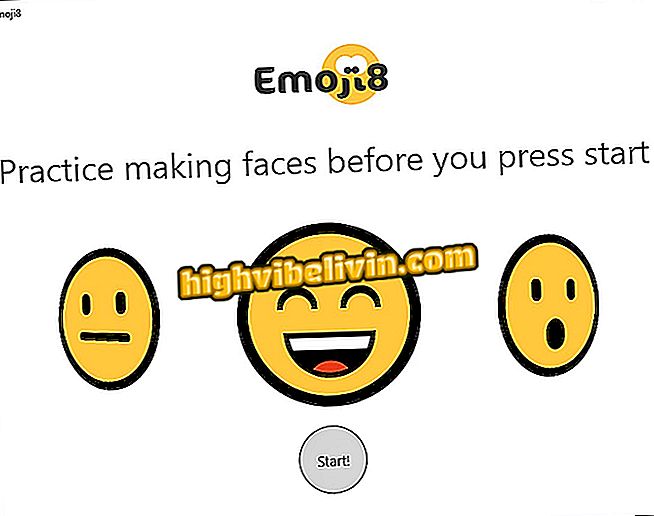How to use the tables to follow fighting games championships
Thousands of spectators have been accompanying the various professional competitions of fight games on weekends, such as Street Fighter V, Dragon Ball FighterZ and others. However, few know how to follow the tables and schedules of the different modalities for each event.
Fight game championships are traditionally held in the "Double Elimination" format, where each player is eliminated from the competition only after losing two games. In order to better understand this system, check out the step-by-step example of the Twitch broadcast on Street Fighter V in the Brussels Challenge 2018, in which the official table was posted on smash.gg. The performance of the player Masato "Bonchan" Takahashi will be demonstrated, as he passed through the two keys of the event.
Get all the details of the Capcom Pro Tour 2018

Bracket with the eight finalists of Street Fighter V by ELEAGUE 2017. The Double Elimination format is the most adopted in this type of tournament
Step 1: To access the table of a tournament you are watching - call "bracket" - type the command "! Bracket" in the chat (without quotes). Promptly, a bot will provide the championship table link. Click to go to the Smash.gg page of the competition information.

Use the command highlighted in the photo and click on the link mentioned below
Step 2: Within the event page, choose the game you are watching and click the option that has the message "in progress" ( pools, top 32, top 8, etc.). If the tournament has already been played, just choose the phase you want to check the result - the finals are referred to as "top 8", "top 16" or "top 32" - the first line shown as the screen below.

Click the line that mentions the phase in progress. In this example, the Twitch transmission featured a Top 32
Step 3: Find the match live. The table is divided into two parts, "winners" and "losers". The winners key represents players who have not lost any games yet - all participants start with this key. If defeated here, the player is reallocated in the key of the losers (recap). Olivier "Luffy" Hay wins Bonchan for three games to zero and sends the Japanese for the first time to the recap in the example below.
Step 4: To follow a player who has gone to the recap, scroll the page to see the bottom of the bracket. Then drag the table left or right to see the different phases by clicking and holding the screen and then moving it with the mouse.
Step 5: Understand the rule of the grand finale. When a player wins all play-offs (in this case with Bonchan winning the Final Losers), he is eligible for the grand final against the champion of all Winners key matches - in the example, the same Luffy who sent him to the losers. The champion is decided in two ways:
A) The player who comes from the winners must win only one match. If Luffy had won this game (which consisted of winning three games), he would have taken the championship immediately.
B) The player coming from the losers must win a first match. This causes the bracket reset of the competition. As Luffy had not lost yet, the Nash player reset the bracket by winning 3-2.

Example of bracket reset: new end is worth the title for both sides
After the reset, the winner of this new game is declared champion. At this event held in Brussels by the Capcom Pro Tour 2018, Luffy receives the trophy convincingly. The finalists faced each other in three different stages: the first for the Top 8 Winners, the second for the Grand Finals and the third for the Bracket Reset Finals.

Click on the highlighted option and roll the page to check the final positions after the event ends
Last step: Find the players' final position by clicking on the "Standings" option on the event page (return to step 2). There it is possible to find out the nationality of each one, which opponents caused that player's defeat and which tables demonstrate his performance.
Resumption of Double Elimination terms
Some foreign terms and others dealt with in this tutorial are recurring in live matches. Check out the most used:
Bracket: the virtual table used for the championships. It is publicly shared and updated in real time by organizers and / or users on sites like "smash.gg" and "challonge".
Double elimination: conventional format for professional contests of fighting games like Street Fighter, Tekken, Dragon Ball, The King of Fighters, Guilty Gear, among others.
FGC (Fighting games community): FGC (Fighting games community) is the great public fan of fighting games that accompanies, organizes events or is part of the competitions of the genre as an athlete.
FT # (First to #): This term is accompanied by a number (in place of the "#") and means that the winning player is the first to win the so-called number of games. FT2 usually happens from qualifying to Top 8 FT5 is used in the team's tournaments, and the exceptional FT10 is played in two-player standings, ie "best of 2", "better of 3", "better" of 5 ", etc.
Game: It's the set of rounds, which we usually call starting. In Tekken and KOF, a game consists of the series of three defeated rounds, while in other games like Street Fighter and Mortal Kombat, it consists of two rounds.
Grand Final: just as the name mentions, as it brings together the winners of the key "winners" and the key "losers". Understand that a big final does not give the title to both players, as there is a need for a reset by the one that comes from the losers.
Losers bracket: the recap key. No player can lose his match here or he will be permanently eliminated from the competition.
Losers final: the final among the only remaining of the recap. The player who suffers defeat in the final winners is one of the participants, while the other is the one to overcome all others who have already been eliminated.
Match: is called a match or match, but differs from the game. A match consists of two or three games, following the denomination "FT" for that confrontation. As an example, the grand finale of Street Fighter V consists of a match of three games.
Match Point: term used to define that the current round decides the position of any player.
Pools: When a tournament has many players, a group elimination phase (in the same Double Elimination format) happens to reduce the number of participants to 64 or 32.
Round: The classic division of a fight. Each game has its rounds system.
Standings: positions for the competitors in the tournament.
Top #: mentioning that a "Top 8" is happening means the tournament has already been reduced to eight players, which will be the top 8 of that event. Even the term "Top 64" is used as phase indicators.
Tournament point: term used to define that this round is worth the championship for the mentioned player. Ex: "We are at the end of the competition, this is the tournament point for Justin Wong".
Winners bracket: the main key of the competition. The player who loses a dispute here is not eliminated and yes, sent to the bracket losers.
Winners final: the final among the only winners of all matches. The player suffering the defeat in the final winners is sent to the final losers, still having the right to play the grand final by the competition.
Stay tuned for all the news on everything about Street Fighter V and all about championships.








